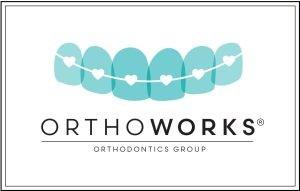
You’re noticing some crowding in your child’s teeth. You read and researched about teeth alignment. You also know about the different types of braces. Now, you are bracing (pun intended) for the commitments ahead. But, are braces really worth it? I mean, the crowding is not that bad! Is it? What about those teeth aligners that you can get online? Can they do the trick?
To get the best insights and tips from the best experts in the San Francisco Bay Area, we sat down with Dr. Wendy Fang from the renowned Orthoworks Invisalign and Orthodontics Group and asked her all about how to determine whether braces are worth it – check them out below:
1. There is a bit of crowding in my child’s lower jaw but they don’t mind it. Is it worth it to get braces?
In my orthodontic opinion, it is worth it to correct crowding even if your child doesn’t mind it. Crowded regions of teeth can be harder to clean without extra care and attention to brushing and flossing techniques. Additionally, recent studies have shown that crowded areas harbor more negative bacteria, the kind that causes cavities and gum disease. If not cleaned out with proper daily hygiene, the health of the oral cavity can be negatively impacted.
2. How do we recognize a potential bite problem or any other issues that may require orthodontic attention?
At home, your child may have trouble chewing or biting into certain foods. This could be a sign that you can recognize and prompt you to make an orthodontic consultation appointment. Psychosocially, your child may report teasing or bullying about their teeth. This is another scenario in which setting up a consultation would help to identify the dental problem and allow for steps to be taken to align the teeth. Lastly, I do not expect all parents to be able to identify bite problems on their own. That’s why we have dental professionals to help you make that determination! As long as you maintain routine bi-annual dental appointments with your family dentist, they can always help you recognize orthodontic issues and make the referral to the specialist.
3. Can my child just wear a retainer instead of having to get braces?
Orthodontic treatment can be divided into active and passive categories. Braces are considered a form of active treatment. The orthodontist is using the braces to move the teeth into alignment. This can also be done with aligners, which may look like “retainers” due to their clear-tooth-shaped appearance. However, aligners are not the same as retainers as each aligner is not in the same position as the patient’s existing teeth, thus resulting in movement of the tooth. In contrast, retainers are meant to only “retain”, or hold, the existing position of teeth. As such, they are not designed to move teeth into alignment. However, there is a subcategory of adjustable retainers that can be modified to make very minor changes to tooth position, so in some cases, if the alignment is not too bad, an orthodontist may recommend this type of retainer.
4. Can Invisalign replace braces?
Yes! Invisalign is a great alternative to braces. Your orthodontist will decide as to how complex your child’s case is and if Invisalign is a good option for them. When planned by a skilled specialist and with good patient compliance, Invisalign is equally effective at aligning teeth as braces.
5. Is Invisalign covered by dental insurance?
Every dental insurance is different. This is best determined by directly calling your local orthodontic practice to discuss orthodontic coverage with your particular insurance plan.
6. If we get veneers, do we need braces?
This is a more patient-specific scenario. If you did not have previous orthodontic treatment and just got veneers with your dentist, you may still need orthodontic treatment if other misalignment issues veneers alone cannot address. Many patients could benefit from both orthodontic treatment and veneers to give them the most aesthetic final result. Best to see your orthodontist for a consultation before veneer work to see if your issue is an alignment issue or a cosmetic tooth shape and size issue so you can better understand your comprehensive dental needs.
7. What’s the difference between braces and Invisalign and ceramic aligners?
Braces, in the traditional sense, are metal brackets that get glued onto the front surfaces of the teeth.
Invisalign aligners are plastic “trays” custom-made to fit a particular person’s teeth based on a 3D model of the teeth.
Ceramic braces are still grouped into the category of “traditional braces” but instead of being made out of metal, they are made from a type of ceramic material. Every company has its proprietary materials so “ceramic” is now more commonly referred to as “clear braces”.
8. Can I just get one of those teeth aligners online instead of going to the orthodontist?
While direct-to-consumer (DOC) companies, such as SmileDirectClub, offer a convenient service for their customers, it may not be the best option for everyone. The benefit of having a board-certified orthodontic specialist overseeing a patient’s care is so that the treatment progress and health of the teeth and gums can be monitored. Additionally, some cases are more complex than what DOC aligners can accomplish. It is always best to first get a consultation with your local orthodontist to explore treatment options and better understand your unique needs before electing to go with a DOC option.
To learn more, visit orthoworks.com and schedule a virtual consultation.
 WENDY FANG, DDS, MPH
WENDY FANG, DDS, MPH
Dr. Fang is a graduate of Stony Brook University, where she received her Bachelor of Science degree in Biology, Doctorate of Dental Surgery (DDS), and Masters in Public Health (MPH). Following dental school, she went on to earn her Certificate in Orthodontics at Montefiore Medical Center in The Bronx, NY where she was appointed Chief Resident in her third year. Dr. Fang’s dedication to continuing education and passion for dentistry is what allow her to provide an excellent standard of care to patients of all ages. She is a member of the American Association of Orthodontists and the Pacific Coast Society of Orthodontists and is ABO board-certified.
Whilst Dr. Fang is very dedicated to her work and patients, she still finds the time to enjoy the company of family and friends. She is always keen to explore new foodie scenes and adventure out into the world when she gets the chance.
 About Orthoworks Invisalign and Orthodontics Group
About Orthoworks Invisalign and Orthodontics Group
OrthoWorks Invisalign and Orthodontics Group is the #1 Provider of Invisalign treatments in the San Francisco Bay Area and was founded by Dr. David Shen, who is recognized as one of the top five most experienced Invisalign® doctors in the world and is a member of the Top 1% Elite Provider Club. Dr. Shen and Associates specialize in providing orthodontic care using a variety of techniques including Invisalign® appliances, traditional braces, surgical orthodontics, cleft palate/cleft lips, and sleep apnea. In short, their practice is dedicated to one goal: to create healthy and beautiful smiles for children and adults using the highest quality of orthodontic care available. To achieve this, Orthoworks utilizes the latest technological advancements in the field together with the team’s collective experiences. Over the years, the practice has grown from its original three locations to over ten locations throughout the San Francisco Bay Area, serving over 60,000 orthodontic patients.

















